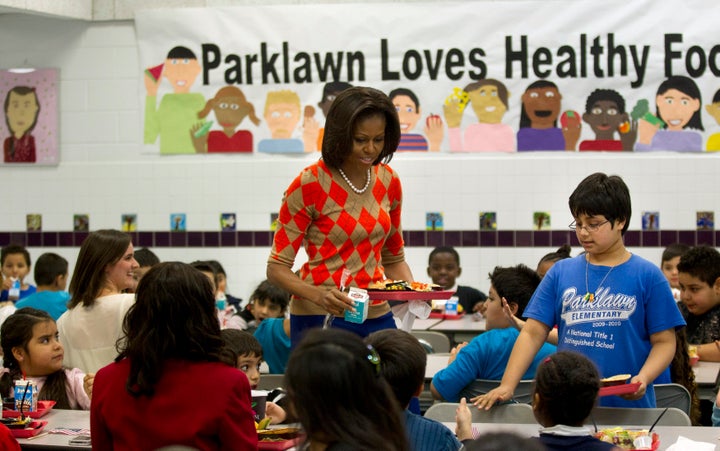
Updating national nutrition standards for snack foods and beverages sold in schools -- a move proposed by first lady Michelle Obama and Agriculture Secretary Tom Vilsack in January -- could go a long way in helping students maintain a healthy weight and increase food service revenue, according to a health impact assessment released Tuesday.
The report, by the Kids’ Safe & Healthful Foods Project and the Health Impact Project, found that improved nutritional standards for snack foods and beverages would reduce consumption of these products during the school day. Additionally, due to the fact that children consume half of their daily calories at school, new guidelines -- when implemented -- would have a positive impact on student weight, according to the paper.
A study conduced by Y.C. Wang et al. in 2006 found that the spike in childhood obesity between 1988 and 2002 could have been prevented by an average reduction of 110-165 calories per day.
The report also showed that many schools’ food service departments may be losing money when students buy snack foods from vending machines or a la carte lines, as opposed to healthier breakfast or lunch meals.
School districts saw their total food-service revenues increase after nutritional guidelines for snacks and beverages were put in place. With fewer items competing for students’ lunch money, they are more inclined to purchase school meals.
“School districts on average experienced an increase in food-service revenues after the implementation of standards for snack foods and beverages -- even when controlling for factors such as the economic downturn, population size, demographics and poverty levels,” Portland State University Professor Neal Wallace, who conducted the HIA’s economic analysis, said in a statement. “The increases in food-service revenues were found to offset any losses in sales of competitive foods, leaving overall food-related revenues virtually unchanged.”
More generally, the HIA concluded that all children would benefit from new nutrition standards, especially those in “vulnerable populations.” Students from low-income families who participate in free and reduced-priced meal programs would be more likely to buy healthier foods under these guidelines. Furthermore, the changes would help combat obesity and related diseases in black and Hispanic children, who are more prone to such conditions.
The recommendations put forth by the projects are in line with what the USDA has already proposed: establishing nutrition standards for all foods sold on school grounds during the day that are outside the USDA meal program, and setting nutrition guidelines for all beverages sold onsite, including those sold in vending machines.